Dishwasher Fills With Water When Off: Unflooding Your Dishwasher
Ever opened your dishwasher, expecting clean dishes, only to find a mini pool inside?
I’ve been there too. Let me walk you through the reasons you end up with this watery surprise, along with some handy fixes.
To keep it simple, A Dishwasher can fill with water when off due to drainage issues, valve problems, internal glitches, or water quality.
So, let’s dive in together and make sure your dishwasher stays dry so it won’t end up flooding your kitchen.
Why Does the Dishwasher Fill With Water When It’s Off?
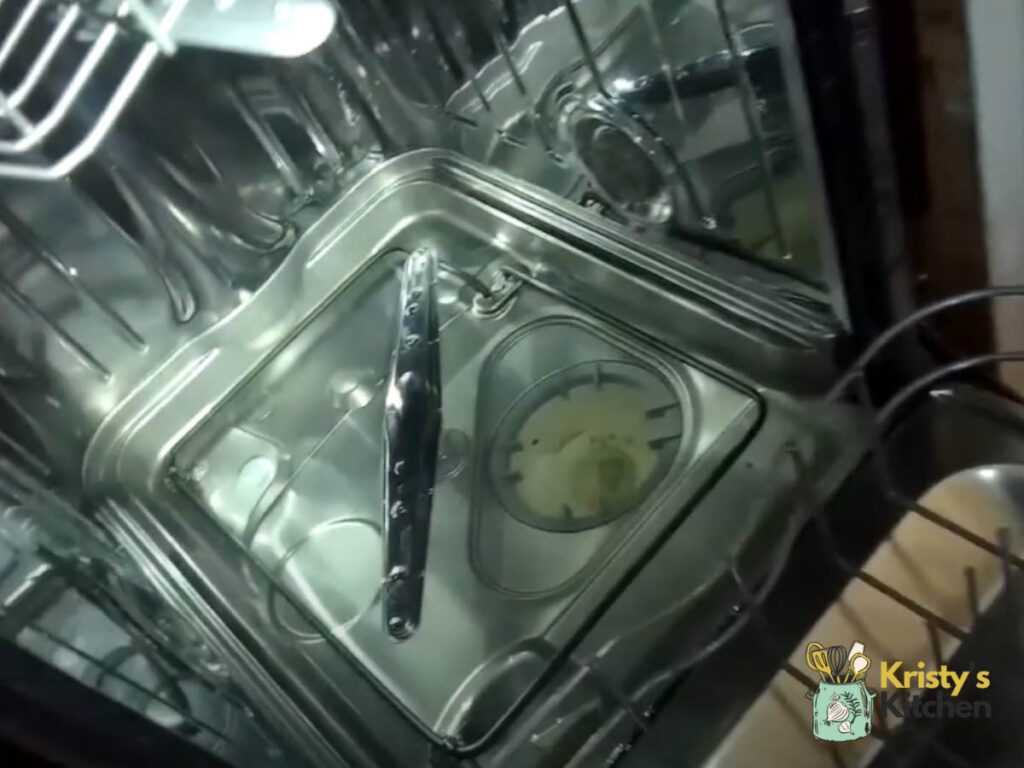
Let’s get to the bottom of why your dishwasher fills with water even when it’s not running.
There are a few reasons behind this:
Reason 1: Drain Problems
Sometimes, the drain can get clogged or the hose isn’t in the right place.
This can make water flow back into the dishwasher.
- Blockages: Gunk and debris in the drain, garbage disposal, or hose can stop water from flowing out, leading it to flow back into the dishwasher.
- Kinks and Misplacement: If the hose is bent or not in the right place, water can’t escape properly, making it go the wrong way.
- Air Gap or High Loop: Without a proper air gap or loop in the hose, water can siphon back into the dishwasher.
Reason 2: Valve and Switch Issues
The valves and switches that control water might not be working properly.
This can cause water to enter the dishwasher when it shouldn’t.
- Check Valve Trouble: An old or stuck check valve could let water flow back into the dishwasher.
- Drain Valve Issues: A jammed or broken drain valve might not seal, allowing water to sneak back in.
- Water Inlet Valve Woes: Sometimes, the valve that brings in water doesn’t close well, leading to a slow leak.
- Float Switch Confusion: If the float switch isn’t working, it might not signal the valve to stop, causing water to overflow.
Reason 3: Internal Component Troubles
Parts inside the dishwasher, like the pump or impeller, might be damaged.
This can stop water from leaving the dishwasher as it should.
- Impeller Problems: If the drain impeller isn’t working right, water won’t leave properly.
- Motor Troubles: If the drain pump motor isn’t running, water won’t be pumped out.
- Drain Solenoid Issues: A wonky drain solenoid can stop water from leaving properly, leaving it in the dishwasher.
Reason 4: Water Quality Factors
If your water has lots of minerals, it can affect how the dishwasher works.
This might lead to water filling up even when it’s off.
- Mineral Buildup: Minerals from hard water can stick to the inlet valve, stopping it from closing properly. Hard water can leave deposits that mess with how valves and switches work.
Dishwasher Fills With Water When Off: Step-By-Step Solutions

Now, let’s take a closer look at how to fix these issues, one step at a time.
I’ll walk you through the solutions for each problem so you no longer have to deal with your dishwasher not draining.
Fixing Drainage Problems
One major reason for water accumulation is poor drainage. Here’s how to deal with it:
- Clearing Clogs:
- Before you start, turn off the dishwasher to stay safe.
- Take out the bottom rack and look at the drain area.
- If you see any gunk or food, that could be causing the problem.
- If there’s a clog near the drain, use a sink plunger.
- Cover the drain and give it a few plunges to clear things out.
- If your dishwasher has a filter, take it out and clean it under running water. This helps prevent future clogs.
- Put everything back in place and run a test cycle without any dishes to make sure the water drains properly.
- Checking the Hose Position:
- Look at the drain hose for any kinks, bends, or blocks.
- If you find any, gently straighten it out.
- Make sure the drain hose has a high loop or an air gap to prevent water from flowing back.
- Fasten it under the sink’s countertop or cabinet.
- Double-check that the hose is properly connected to both the dishwasher and the sink’s drain. Use clamps if needed.
Fixing Valve and Switch Issues
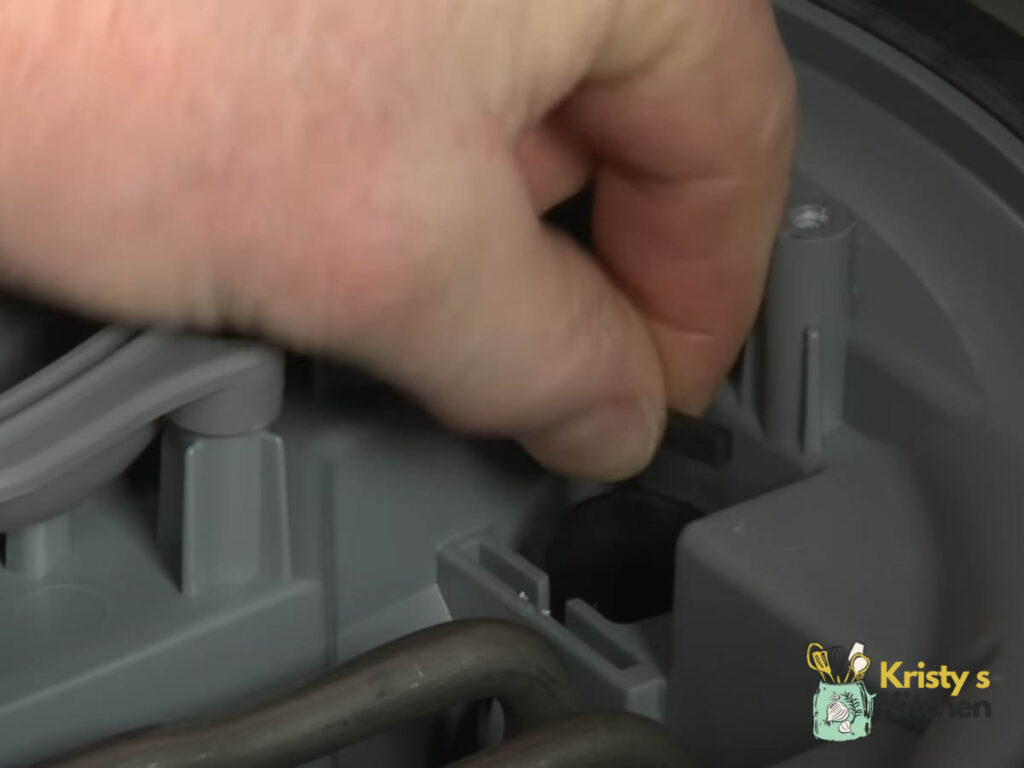
Valves and switches play a big role in controlling water flow. This can get a bit more manual than most other solutions.
The most common reason is usually the water inlet valve having issues – so, you might be asking “How do I fix the water inlet valve on my dishwasher?”
Well, I’ve got all you need and more. Let’s tackle the issue step by step:
- Replacing the Check Valve
- To confirm whether a worn-out check valve is causing water to linger in your dishwasher even when it’s off, look for cracks, corrosion, or issues with sealing
- Locate the Check Valve: Find the check valve near the water inlet or drain hose connection (standard) or in the drain line (reverse water flow).
- Turn off the water supply and power to the dishwasher.
- Carefully disconnect the old valve from the water or drain line.
- Screw in the new check valve and use plumber’s tape for a proper seal.
- For reverse water flow, ensure the arrow on the valve points away from the dishwasher.
- Use hose clamps to prevent leaks.
- Restore water supply and power.
- Run a short dishwasher cycle to verify the new check valve’s functionality.
- Cleaning or Replacing the Drain Valve:
- Find the drain valve at the bottom of the dishwasher, usually near the drain.
- You might need to remove a panel to get to it.
- Look for any debris that might be blocking the valve from closing completely. Use a flashlight to see clearly.
- If you see any debris, carefully remove it with tweezers or a small brush.
- Be gentle to avoid damaging the valve.
- Move the valve manually to make sure it’s working smoothly and closing properly.
- If it’s not, consider getting a new one.
- Installing a New Water Inlet Valve
- Unplug the dishwasher and turn off the water supply before starting.
- Depending on your dishwasher model, you might need to remove a panel to get to the water inlet valve.
- Carefully disconnect the wires and water supply line from the old valve.
- Connect the wires and water supply line to the new water inlet valve.
- Turn on the water supply and check for any leaks around the connections.
- Put the panel back and plug in the dishwasher. Run a test cycle to make sure the new valve is doing its job.
- Checking and Replacing the Float Switch
- Find the float switch usually at the bottom front of the dishwasher, under the access panel.
- Look closely at the switch for any damage, rust, or stuff that might be in the way.
- Carefully disconnect the wires from the old switch and take it out.
- Attach the new switch to its bracket and connect the wires like they were on the old one.
- Push the float up and down to check if it moves freely and triggers the switch.
- Close the dishwasher door and run a test cycle to make sure the new float switch tells the water to stop when it should.
Fixing Internal Component Issues
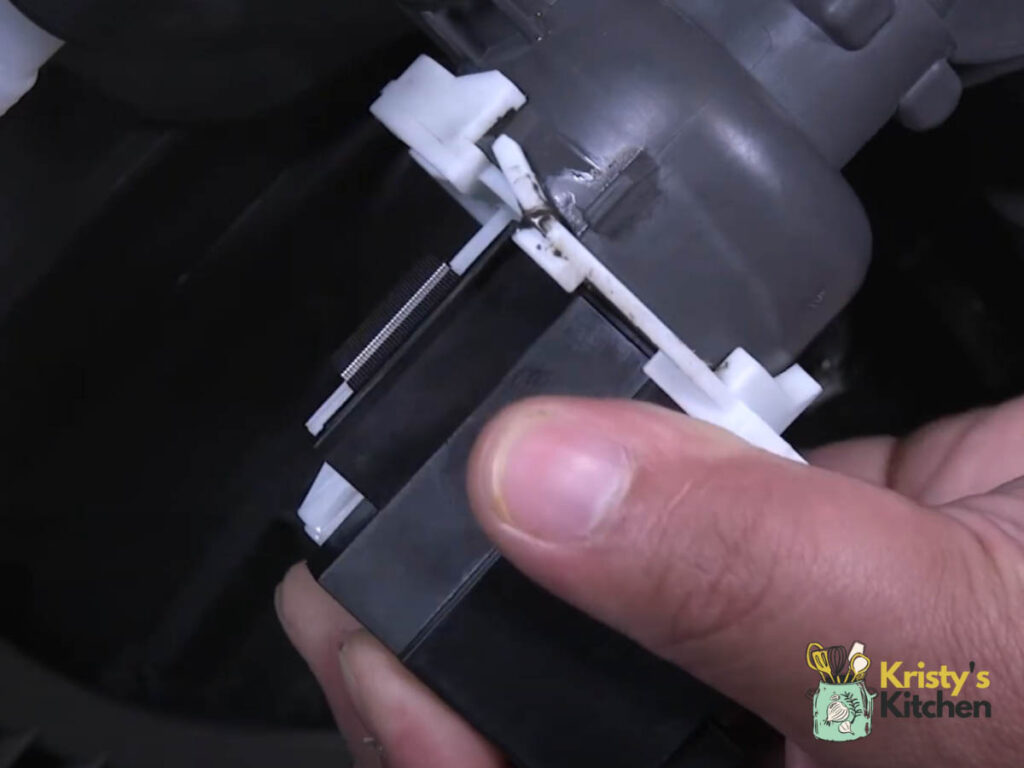
When things inside your dishwasher act up, it can cause water buildup.
Here’s what you can do:
- Fixing or Replacing the Drain Impeller
- Take out the bottom rack and spray arm to get to the impeller at the bottom of the dishwasher.
- Look closely at the impeller for any broken parts or stuff stuck to it.
- If there’s anything stuck, use tweezers or a small brush to carefully remove it.
- If the impeller is damaged beyond repair, you’ll need a new one. Make sure it’s compatible with your dishwasher.
- Follow the instructions that come with it to install the new impeller properly.
- Replacing the Drain Pump Motor
- Remove the bottom access panel and find the drain pump motor near the bottom.
- Before you do anything, unplug the dishwasher and disconnect any wires and hoses from the old pump.
- Attach the new pump, secure it with screws, and connect the wires and hoses just like they were on the old pump.
- Put the access panel back, plug in the dishwasher, and turn on the power.
- Run a test cycle to make sure the new drain pump is working as it should.
- Fixing or Replacing the Drain Solenoid
- Unplug the dishwasher and shut off the water supply first.
- Depending on your dishwasher model, the solenoid might be near the drain valve or pump.
- Look for any signs of damage, burnt wires, or loose connections on the solenoid. Fasten the connections.
- Use a multimeter to check its resistance. If the reading is way off, it might be time for a new one.
- If the solenoid is acting up, disconnect the wires and take out the old one. Put the new one in and reconnect the wires.
- Plug in the dishwasher, turn on the water, and run a test cycle. Make sure the drain solenoid is working as it should.
Fixing Water Quality Concerns
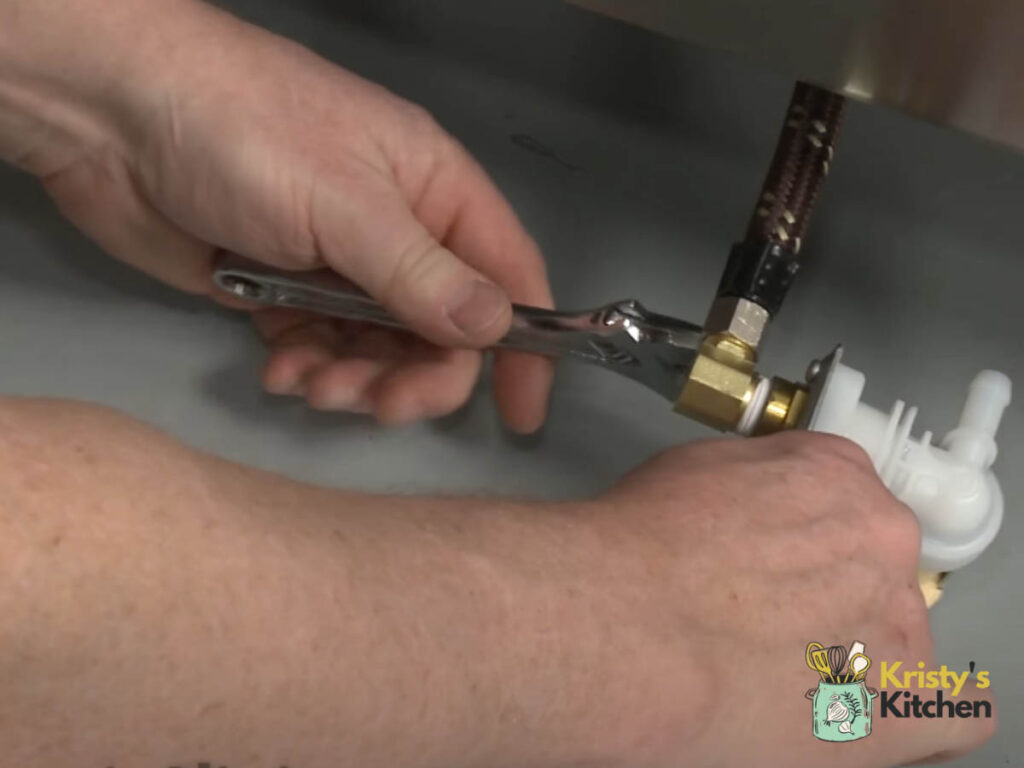
The water in your dishwasher matters. Let’s deal with water quality issues:
- Cleaning the Inlet Valve
- Look for the water inlet valve, usually at the bottom front or under an access panel.
- Unplug the dishwasher and turn off the water before you start.
- Carefully disconnect the water supply line and take out the valve.
- Soak it in a mix of vinegar and water for about an hour to get rid of mineral buildup.
- Use a soft brush to gently scrub the valve and rinse it under running water.
- Once it’s clean, put the valve back, reconnect the water supply line, and check for leaks.
- Plug in the dishwasher and run a test cycle to see if the cleaned valve is working well.
When to Call in Professionals for Help?
If you’ve tried the fixes but the dishwasher still fills with water, it might be time for experts to step in.
Here’s when to consider their help:
- Tried and No Luck: If the solutions haven’t worked, pros can tackle more complex issues.
- Not Sure About DIY: If appliance work isn’t your thing, pros have the skills to avoid accidents.
- Not Familiar: If you’re unsure about how dishwashers work, pros can diagnose and fix problems accurately.
Safety is the top priority. If you’re unsure, it’s best to let professionals handle the job.
Tips To Prevent This Problem In the Future
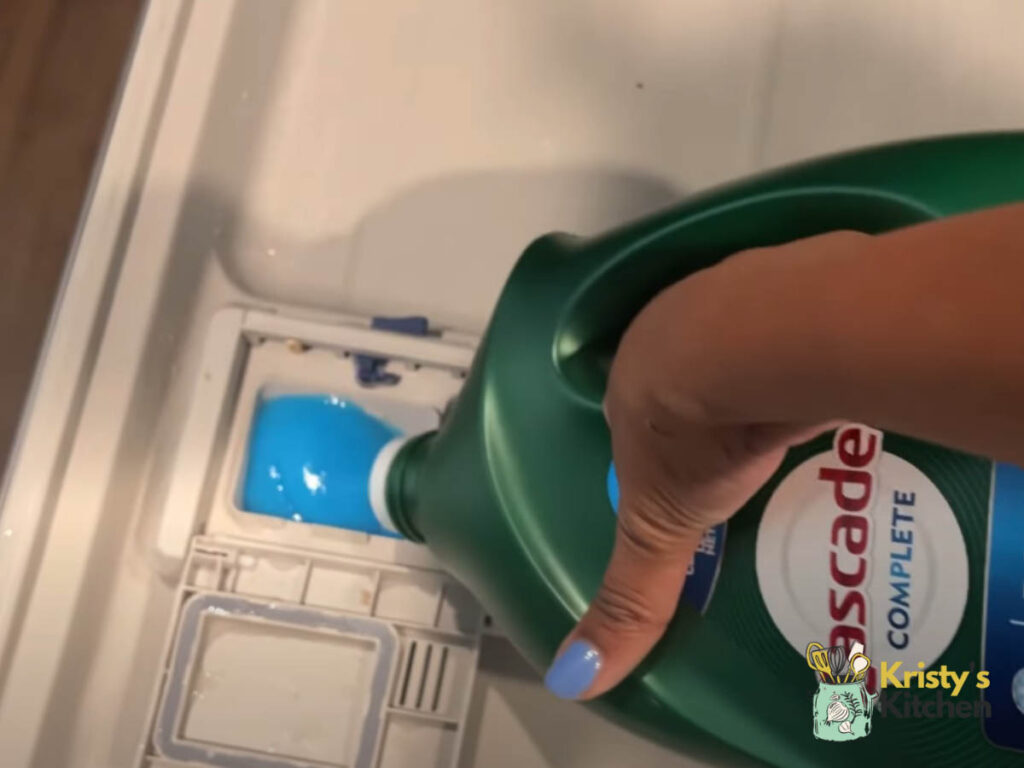
Here are practical steps to prevent your dishwasher from filling with water when it’s not meant to:
- Regular Checks: Keep an eye on key parts like the drain, hose, and valves. Clean them to prevent debris from causing water backflow.
- Clean Dishes: Scrape off extra food before loading dishes. This helps prevent clogs that can lead to water buildup.
- Use Good Detergents: Choose reputable detergents that fight mineral buildup. This helps parts work well and stops water issues.
- Start with Hot Water: Run your kitchen tap with hot water before a dishwasher cycle. It helps clean better and stops water from accumulating.
- Watch Water Quality: If your water is hard, consider softeners or filters. They stop minerals from affecting valve performance.
- Load Carefully: Don’t overload your dishwasher. It can strain the impeller, pump, and other parts, causing problems.
- Fix ASAP: If you notice things like slow draining or odd sounds, fix them soon. Quick repairs can prevent small problems from getting big.
FAQs
How do I know if my dishwasher inlet valve is bad?
If your dishwasher doesn’t fill properly, has low water pressure, or leaks water, it might signal a faulty inlet valve.
Is it normal for water to be left in the dishwasher after a cycle?
Yes, a small amount of water at the bottom post-cycle is common. But if it’s excessive or dirty, it could indicate a problem.
How do you unclog a water inlet valve?
Gently remove the valve and clean it of debris. Be sure to turn off water and electricity before attempting any work.
Do dishwashers fill with water automatically?
Yes, dishwashers are designed to fill with water at the beginning of a cycle. But if water fills when it’s not running, there might be an issue.
Final Thoughts
Now that you know why your dishwasher might fill with water unexpectedly, you’re prepared to handle this hiccup with ease.
Remember, simple fixes like checking for clogs, maintaining valves, and ensuring proper drainage can keep your dishwasher running smoothly.
Clean your dishwasher regularly and you’ll be able to keep it as dry as a bone.
Good luck and here’s to no more icky water on your kitchen floor!
